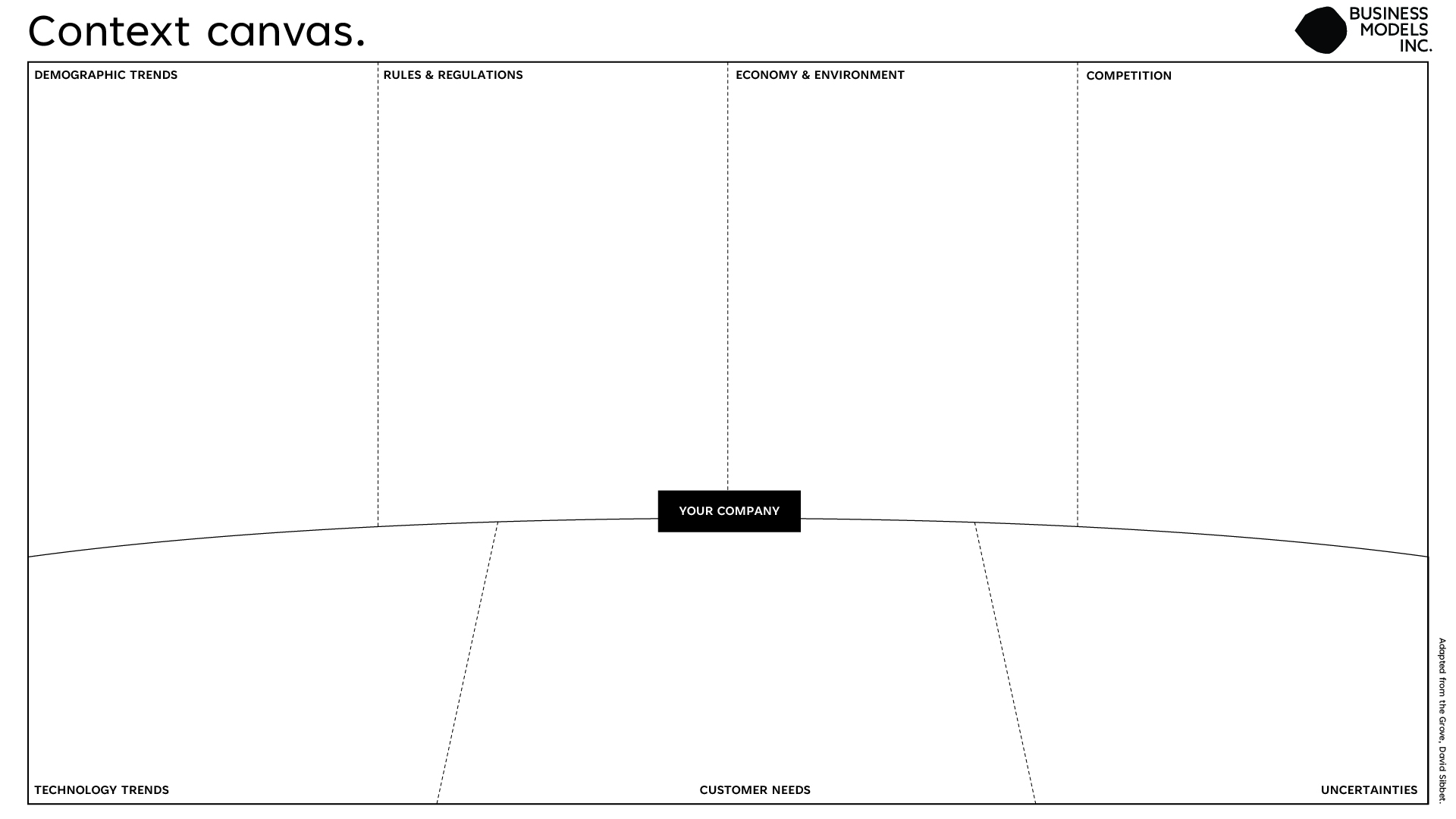
Context Canvas.
Understand what is happening around you.
The Context Canvas ® is the framework we use to help you understand the context. Use this template to map out the trends with your team, and share different perspectives. It will help you to look for drivers outside your own company and have a conversation about the forces that (could) shape your business now and in the future. The Context Canvas ® was created by David Sibbet, of the Grove International.

